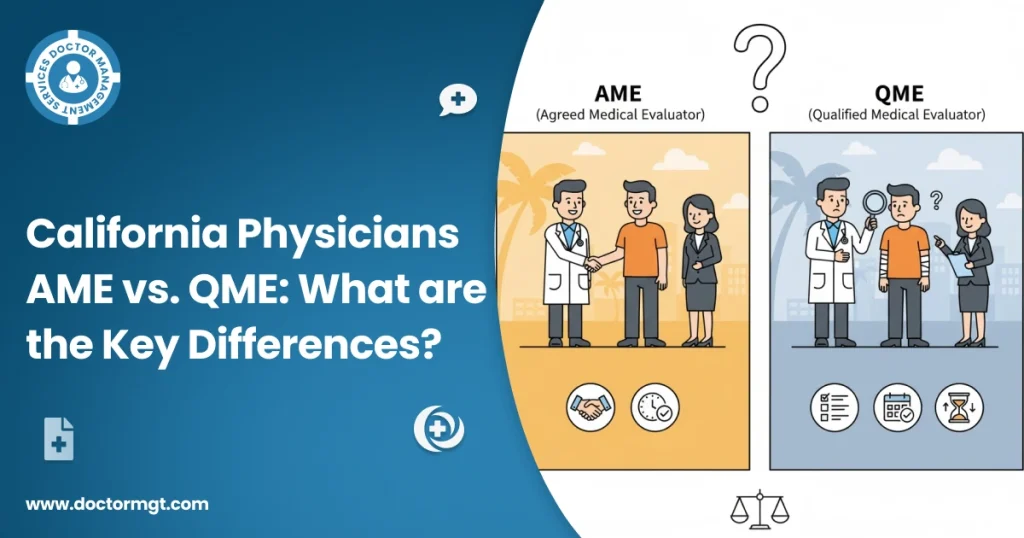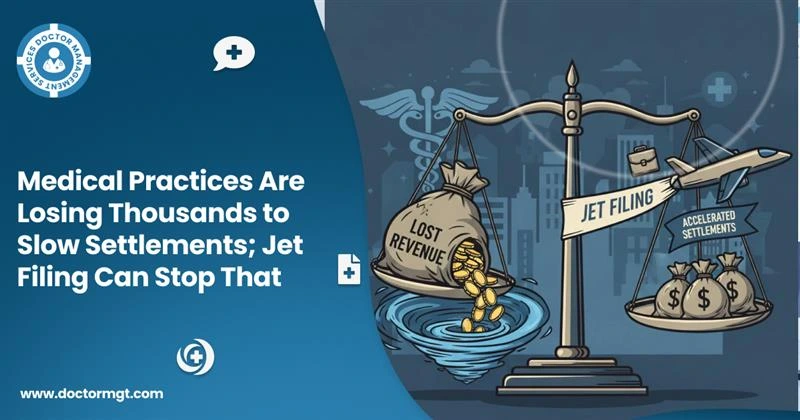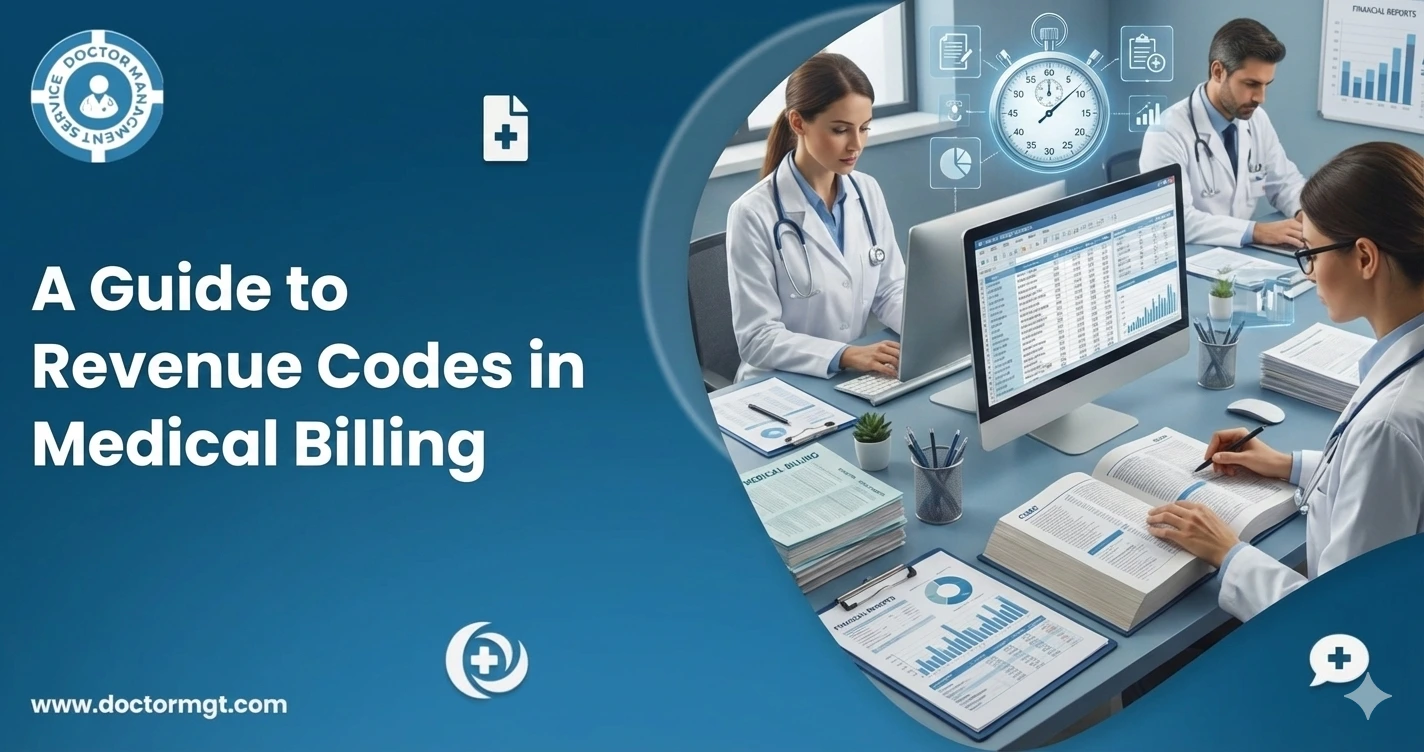In California’s workers’ compensation system, medical-legal evaluations are central to resolving disputes about workplace injuries and care plans. Two types of evaluators stand at the center of this process: Agreed Medical Evaluators (AMEs) and Qualified Medical Evaluators (QMEs).
Both offer independent assessments, but their legal framework, procedures, and administrative demands differ in important ways. For physicians, understanding those differences is key to maintaining compliance and keeping revenue flowing smoothly.
As a QME billing company offering California QME billing services and California AME billing, we help physicians by managing invoicing, documentation, and payment follow-ups so their time stays focused where it counts most.
The Role of Medical-Legal Evaluators in California
Medical-legal assessments exist to deliver neutral expert opinions in workers’ compensation cases. These opinions address questions such as:
- Whether the injury is job-related
- Maximum Medical Improvement (MMI) status
- Permanent impairment ratings
- Recommendations for future treatment
Oversight comes from the California Division of Workers’ Compensation and follows:
- California Labor Code §§ 4060–4062.2
- California Code of Regulations, Title 8 §§ 1–159
- DWC Medical Unit rules
What Is a QME (Qualified Medical Evaluator)?
A Qualified Medical Evaluator (QME) is a physician certified by the DWC Medical Unit to conduct independent medical-legal exams. When no AME is agreed upon, a QME panel is used to select the evaluator.
Key Features of a QME:
- Certified after passing required exams and meeting continuing education rules (Title 8 CCR § 11)
- Selected through the panel QME process
- Cannot also serve as the treating physician in the same case
- Provides written findings on causation, MMI, impairment, and treatment needs
- Must meet procedural deadlines under Title 8 CCR § 38 and Labor Code § 139.2
When a QME Is Used:
- If the injured worker has no attorney
- When parties can’t agree on an AME
- When a neutral, independent assessment is required
Billing for QME services involves detailed rules and can be time-intensive, which is why many physicians choose outsourced medical billing for QME and AME.
What Is an AME (Agreed Medical Evaluator)?
An Agreed Medical Evaluator (AME) is selected by agreement between the defense and applicant attorneys. AMEs are usually seasoned QMEs trusted to evaluate complex cases.
Key Features of an AME:
- Chosen by both sides in represented cases
- Must be a certified QME in good standing
- Reports often carry significant legal weight in hearings and settlements
- Must follow the same reporting and billing rules as QMEs (Labor Code § 4062.2 and Title 8 CCR § 31.7)
When an AME Is Used:
- Only in represented cases
- When both sides prefer one evaluator to avoid panel disputes
- Often in high-value or more complex claims
AMEs face the same documentation and billing expectations as QMEs. Reliable QME and AME administrative support helps them stay organized and avoid cash-flow delays.
AME vs. QME: Legal and Procedural Differences:
| Feature | QME | AME | ||
| Selection Process | Random DWC panel | Chosen by both parties | ||
| Representation | Used in represented or unrepresented cases | Only used in represented cases | ||
| Treating Physician | Cannot be the QME | Can be AME if both parties agree in writing | ||
| Legal Weight of Report | Neutral evidence | Carries significant weight in litigation | ||
| Oversight | DWC Medical Unit | DWC Medical Unit | ||
| Billing Rules |
|
|
Medical-Legal Billing for QME and AME Providers
Whether a physician serves as a QME or AME, reimbursement follows the Medical-Legal Fee Schedule (MLFS) under California Code of Regulations, Title 8, Section 9795.
Key Billing Elements:
- DWC Form 1500 or CMS-1500
- Correct ML billing codes (ML201–ML204, etc.)
- Signed, compliant medical-legal reports (CCR § 38)
- Supporting documentation with each claim
Common Challenges:
- Payment delays or denials from attorneys or claims administrators
- Rejections due to incomplete or non-compliant records
- Time lost on follow-ups
Partnering with a QME billing company eliminates many of these obstacles and keeps the payment process moving.
The Value of Outsourced Billing & Administrative Support
Providing medical-legal services means juggling more than clinical work. Every evaluation involves structured paperwork, reporting deadlines, and follow-ups with legal parties and insurers.
Our QME and AME administrative support helps by:
- Aligning documentation with Labor Code and CCR standards
- Formatting and preparing medical-legal reports
- Submitting claims accurately with required attachments
- Managing QME and AME payment collection directly with attorneys and insurers
- Reducing back-office workload and keeping revenue consistent
This kind of support lets physicians put their energy into the evaluations themselves, not into chasing payments or correcting paperwork.
7. Essential Legal References for QME and AME Providers
QME and AME physicians should stay current with:
- California Labor Code §§ 4060–4062.2 – Medical-legal evaluations
- California Labor Code § 139.2 – QME certification
- California Code of Regulations, Title 8 §§ 1–159 – QME regulations
- California Code of Regulations, Title 8, Section 9795 – Medical-Legal Fee Schedule
- California Division of Workers’ Compensation Medical Unit – QME panel process
These regulations dictate how evaluations are conducted, how reports are structured, and how billing must be submitted to secure payment.
Final Thoughts: Compliance Meets Cash Flow
AMEs and QMEs play a critical role in California’s workers’ compensation system. Their responsibilities may differ, but both operate under strict administrative and billing rules.
For many providers, outsourced medical billing for QME and AME isn’t just a convenience; it’s a way to keep claims accurate, payments faster, and denials to a minimum. With dr management services support, practices can stay compliant and financially stable while focusing on delivering expert medical opinions.







